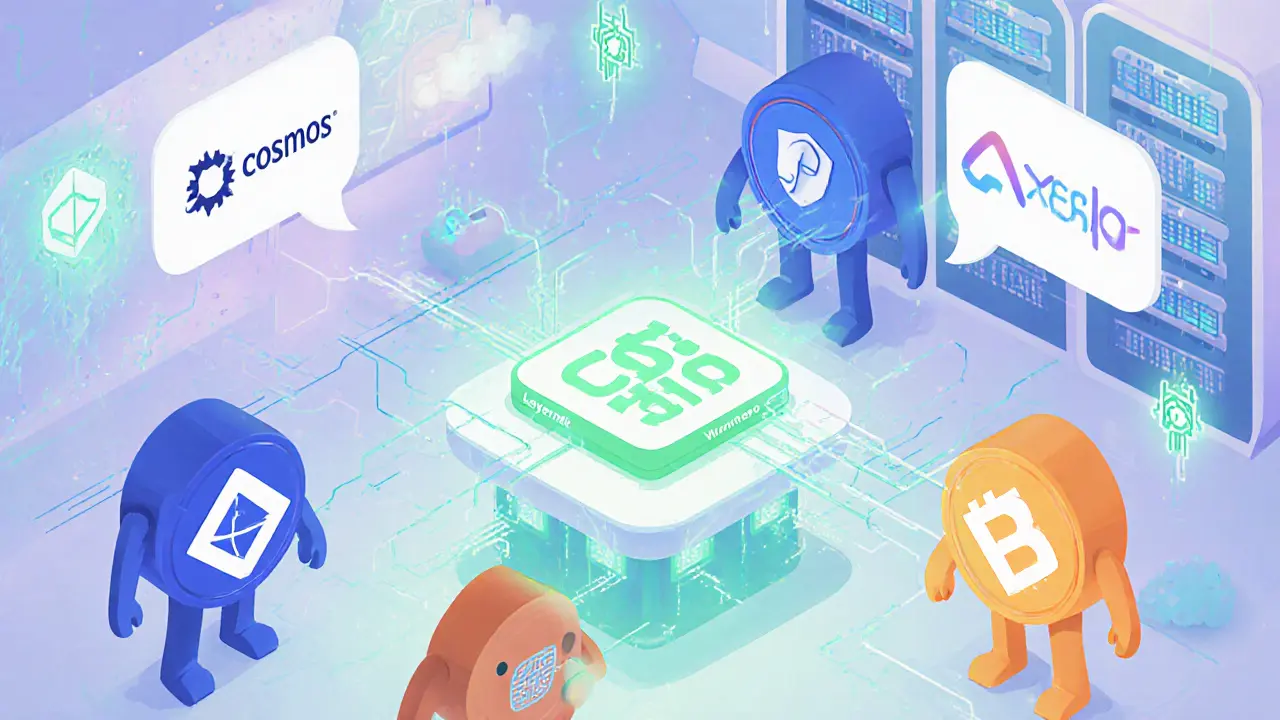When working with CCIP, Cross‑Chain Interoperability Protocol, a universal messaging standard that lets smart contracts talk across different blockchains. Also known as Chainlink Cross‑Chain Interoperability Protocol, it enables secure, low‑latency data and token transfers between otherwise isolated networks.
CCIP isn’t just a bridge; it’s a full‑stack solution that combines Chainlink’s oracle infrastructure with on‑chain routing logic. This means developers can write a single piece of code that triggers actions on Ethereum, Polygon, Solana, or any supported chain without juggling separate APIs. The protocol requires a reliable node set, a fee model that rewards validators, and a standardized message format that every participating network agrees to understand. In practice, that translates to faster token swaps, smoother NFT migrations, and DeFi products that truly operate across ecosystems.
One of the hottest use cases today is connecting decentralized exchanges (DEXs) on different chains. Decentralized exchanges like Uniswap, SushiSwap, or ThunderSwap can leverage CCIP to fetch price data from another network and settle trades without relying on centralized relayers. The result is lower slippage, better liquidity aggregation, and a user experience that feels like a single‑chain app even though the assets live on multiple ledgers. At the same time, smart contracts gain the ability to trigger cross‑chain actions—think a yield‑farm that automatically rebalances between Ethereum and Polygon based on real‑time APRs pulled through CCIP.
Another practical angle is airdrop distribution. Projects that run token giveaways on one chain often want to reward holders on others. Using CCIP, an airdrop contract can verify eligibility on multiple networks, calculate proportional rewards, and execute the payouts in a single atomic transaction. This eliminates the manual, error‑prone process of posting separate claim periods for each chain, saving both developers and participants time and gas fees. The same logic applies to token vesting schedules, where a vesting contract can release tokens on different chains based on a unified timeline, ensuring consistent token economics across the ecosystem.
Security is a core pillar of CCIP. By routing messages through a decentralized validator set, the protocol reduces the attack surface that traditional centralized bridges face. Each validator stakes LINK tokens, providing economic security that aligns incentives. If a validator attempts to tamper with a message, the stake can be slashed, protecting users from malicious swaps or double‑spending attempts—issues that have plagued earlier bridge solutions. This design choice also makes CCIP compatible with emerging validator networks, allowing projects to plug into existing staking infrastructures without building new consensus layers.
From a developer’s perspective, integrating CCIP is straightforward. The protocol offers SDKs in Solidity, Rust, and JavaScript, along with detailed documentation on how to encode messages, set up callbacks, and handle errors. Whether you’re building a cross‑chain NFT marketplace, a multi‑chain lending platform, or a simple token swap widget, the same building blocks apply. Most of the heavy lifting—like gas estimation, fee payment, and message verification—is abstracted away, so you can focus on product features instead of plumbing.
Looking ahead, the adoption curve for CCIP is steepening as more blockchains announce native support. That means you’ll start seeing more projects—ranging from DeFi yield farms to gaming token economies—mentioning CCIP in their roadmaps. As the ecosystem matures, expect tighter integrations with Layer‑2 solutions, faster finality times, and lower costs, making cross‑chain experiences feel as seamless as using a single wallet.
Below you’ll find a curated collection of articles that explore these themes in depth. From DEX reviews and airdrop guides to regulator overviews and token‑vesting strategies, each piece shows how CCIP‑powered functionality is reshaping the blockchain landscape. Dive in to see concrete examples, step‑by‑step tutorials, and the latest market analysis that illustrate why CCIP is becoming an essential layer for any multi‑chain project.

Explore real-world cross-protocol integration examples, compare top blockchain interoperability solutions, and learn how to choose the right protocol for your project.